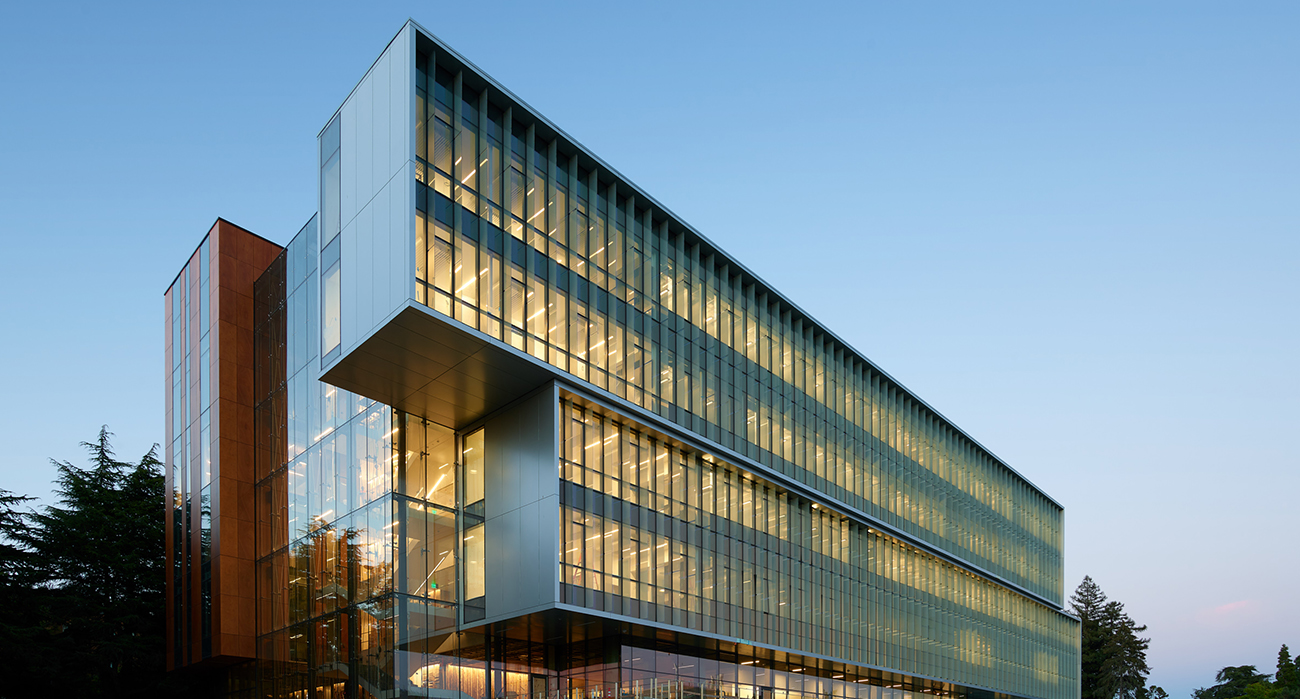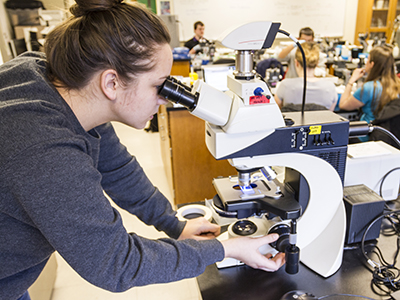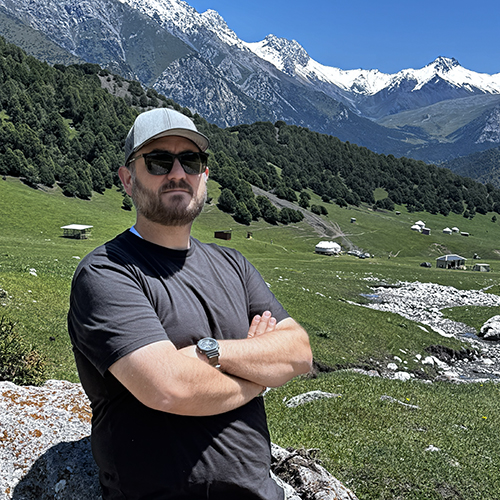
Of the thousands of freshmen arriving on the UW Seattle campus this fall, nearly half will take at least one biology course during their time at the University. About 1200 will major in biology — the largest major at the University. All of them will have access to a new state-of-the-art biology facility, the Life Sciences Building (LSB).
The LSB is the first new teaching and research facility for the Department of Biology since Kincaid Hall opened in 1971. There was no Department of Biology back then; Botany and Zoology were separate departments. Today the unified department offers more bachelor’s degrees than any other STEM department in Washington state.
Providing a world-class biology education on such a grand scale is a challenge. “Biology, like all the sciences, is not a collection of facts to memorize but rather a logically rigorous method for discovering how the world works,” says Toby Bradshaw, professor and chair of the Department of Biology. “The essence of teaching biology is to train students to think like a biologist — to be able to design experiments, analyze data, and interpret the results to incorporate new research findings into the framework of their current knowledge. Fortunately, the Biology Department has a group of faculty whose own research is on the ‘science of biology teaching’ — how to increase student learning in everything from a 700-student introductory class to a 24-student senior laboratory course.”

The emphasis on pedagogy has spurred active learning in even the largest introductory courses. Students engage in small group discussions in class rather than passively listening to lectures. They gain more hands-on experience through lab sections in which actual research replaces textbook experiments. With the recent introduction of a “course-based undergraduate research experience” or CURE into the introductory biology series, students pursue research that contributes to the field, such as studying how antibiotic resistance evolves in E. coli. Upper-level biology CUREs, taught by research faculty as extensions of their own research programs, are more ambitious. Students take the lead on a range of projects including characterizing novel proteins in Giardia or testing how Arabidopsis thaliana responds to environmental stress.
One of the reasons to build the new Life Sciences Building was to provide space to expand our faculty to better meet student demand.
“CUREs are designed to give students the opportunity to experience what it is like to be a scientist — coming up with novel research questions, designing experiments, trouble-shooting failed experiments, and communicating their findings,” says Alison Crowe, principal lecturer and member of the Biology Education Research Group. “Many CUREs will be taught on the ground floor of the new LSB, in close proximity to faculty labs on the upper floors. This will facilitate interaction between the students in class and other members of the laboratory. It also will make it easier for faculty to bring research equipment into the teaching lab spaces or to integrate the amazing botanical collections in the greenhouse into their curriculum.”
Four stories of the new building house faculty laboratories, enabling the Department of Biology to hire and accommodate additional faculty, which also benefits undergraduates. “One of the reasons to build the new Life Sciences Building was to provide space to expand our faculty to better meet student demand,” says Bradshaw, who has been overseeing searches for five new faculty — an unprecedented scale of faculty hiring for the department.

The newly hired faculty will teach undergraduate courses but also welcome undergrads into their research laboratories. About 60 percent of biology majors participate in research outside of class, with more than 260 students having co-authored peer-reviewed scientific papers with Biology faculty mentors over the past decade. Many more have published with faculty mentors in other departments or with organizations that sponsor Biology undergrads, including the UW School of Medicine, Fred Hutchinson Cancer Research Center, and Seattle Children’s Hospital.
Just as students are working with other departments, so are faculty. One-third of Biology faculty have joint appointments in other units across campus, including the School of Medicine, the College of the Environment, the College of Engineering, and the eScience Institute. That, says Bradshaw, reflects changes in the field.
“The future of biology at the UW is to become ‘post-disciplinary’ — with the boundaries between traditional disciplines dissolving completely,” says Bradshaw. “The really hard problems in biology will require new approaches that will only come from biologists collaborating with physicists, chemists, computer scientists, mathematicians, physicians, social scientists, and policymakers. The open, flexible architecture of LSB is meant to foster and nurture these kinds of collaborations, and to ensure that we are preparing our students for the 'new biology' of the 21st century. Discovery starts here!”
. . .
The Life Sciences Building is located on the UW's Seattle campus along Stevens Way, just south of Kincaid Hall.
More Stories

A Sports Obsession Inspires a Career
Thuc Nhi Nguyen got her start the UW Daily. Now she's a sports reporter for Los Angeles Times, writing about the Lakers and the Olympics.

Through Soil Science, an Adventure in Kyrgyzstan
Chemistry PhD alum Jonathan Cox spent most of 2025 in Kyrgyzstan, helping farmers improve their soil—and their crops—through soil testing.

The Public Impact of Private Cities
Geography major Edwin Bai has researched private cities, developed by individuals and corporations, that "take the libertarian idea of low government regulation to the maximum."